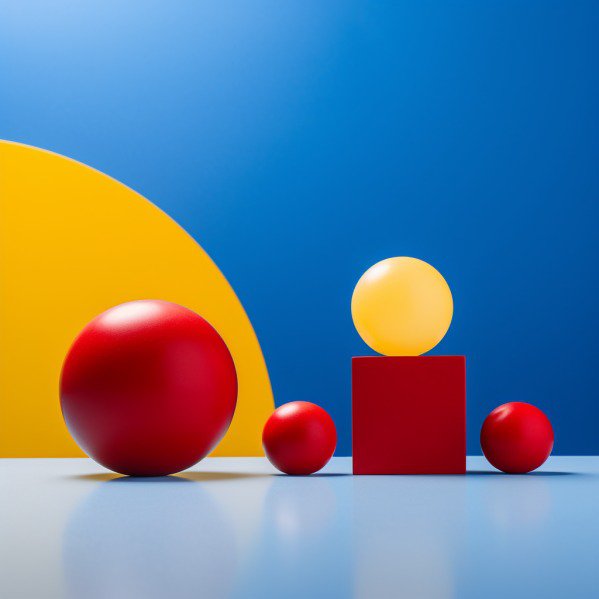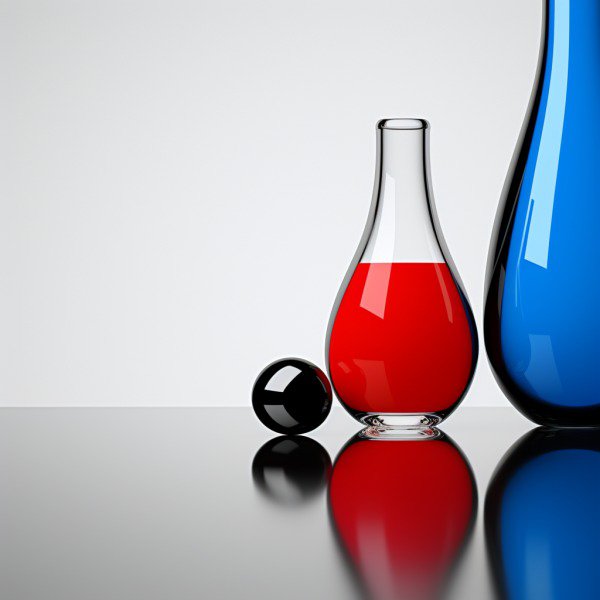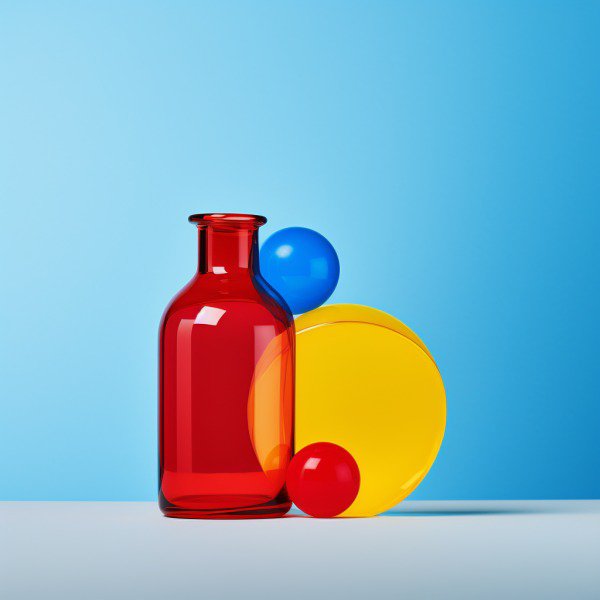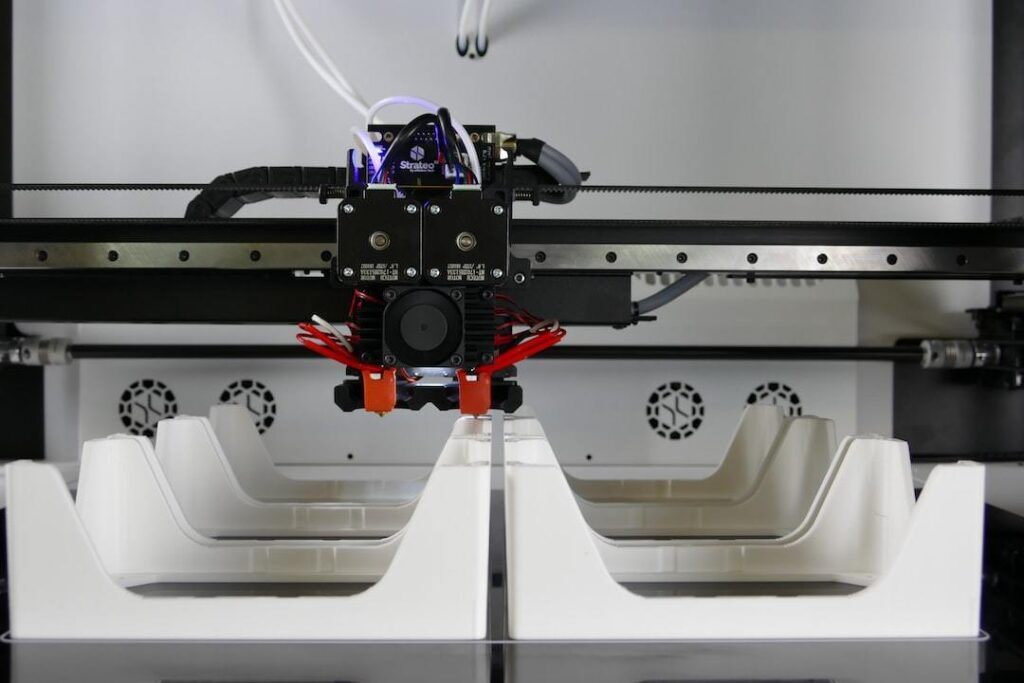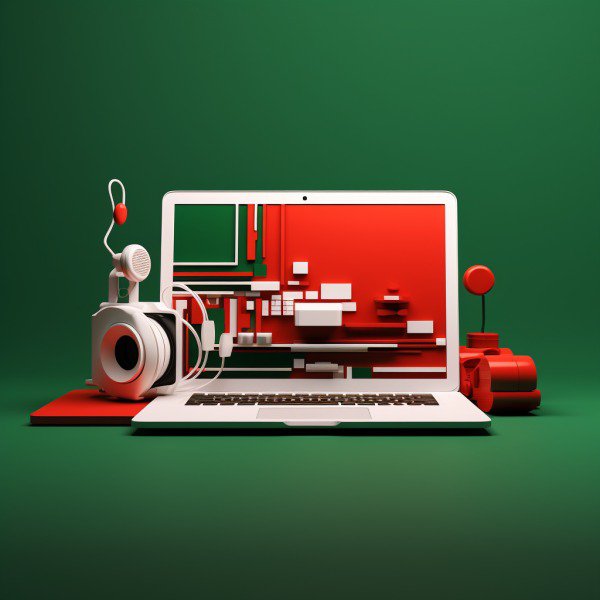Ever wonder how your favorite products go from just a twinkle in someone’s eye to the thing you can’t live without? That journey is all about the design and development of product. Picture an artist with a blank canvas, or a writer staring at an empty page. That’s where it starts – nothing but potential.
The process begins with designers who use their creative juices to turn that blank slate into something extraordinary. It’s like magic, only it isn’t—it’s strategic thinking, analytical skills and understanding user experience.
We’ll dive deep into this world of design—touching on brainstorming sessions that look more like grand symphonies than meetings, target audiences that are understood better than best friends, and iterations so frequent they could make your head spin!
Ever wondered about the magic behind sleek designs and clever functions? Well, we’re here to spill the beans.
Table of Contents:
- Understanding the Design Process
- The Power of Design Thinking
- Creative Yet Analytical Approach
- The Role of Product Designers
- Navigating Between Feasibility, Desirability, and Viability
- Creative Problem Solving: More Than Just Aesthetic Decisions
- User-Centric Approach: The Heartbeat Of Product Design
- From Concepts to Finished Items
- Team Players in Product Development Process
- Collaborating in the Development Team
- The Importance of Cross-Team Collaboration
- Fostering Open Communication Channels
- Nurturing Collaborative Environments
- Identifying the Target Audience
- Customer Surveys: A Direct Approach
- User Persona Development: Walking in Their Shoes
- Data Analysis: Spotting Patterns & Trends
- Conducting User Research and Testing
- Finding The Gold Nuggets: User Testing Samples
- Piecing Together The Puzzle: Usability Studies
- The Discovery Phase
- Generating and Evaluating Product Ideas
- Evaluating Your Great Idea
- Making Adjustments: The Iterative Process
- The Proof Is In The Pudding
- Prototyping and Iterating
- Benefits of Prototypes
- Making Room For Improvement Through Iteration
- Moving Forward With Confidence
- Manufacturing and Quality Assurance
- Taking the Leap: From Prototype to Factory Sample
- Maintaining Rigorous Quality Standards
- Bringing the Product to Market
- Framing The Narrative
- Crafting Launch Strategies
- Measuring Success
- Designing Physical Products
- A Broader Process Involves Many Aspects
- User Experience Design Is Key
- Measuring Success In Physical Product Design
- Designing Digital Products
- The Role of UX Designers
- User-Centered Approach: Key To Successful Product Development
- A Broader Process Involving Multiple Stakeholders
- FAQs in Relation to Design and Development of Product
- What are the 5 phases of product design and development?
- What are the 4 major types of product development?
- What are the 7 stages of a new product development process?
- How do you design and develop a new product?
- Conclusion
Understanding How the Design Process Works
The design process is an intricate dance that balances creative thinking with analytical rigor. It’s like crafting a master recipe, where each ingredient—the product concept, user experience research, and iterative design—must be carefully measured and mixed to achieve a successful final dish.
In this complex recipe of design, the first step is often brainstorming. But not just any random ideation session; it’s about focused brainstorming aimed at defining clear goals for your product development journey. This initial stage helps you pinpoint what your users need and want from your product—it’s the ‘mise en place’ in our cooking analogy.

Power of Design Thinking
When you think creatively about designing products, it gives rise to more innovative solutions that are grounded in real-world needs. This mindset encapsulates what we call ‘Design Thinking’. Think of it as being the master chef who knows exactly how to combine different ingredients for maximum flavor—that’s what using design thinking feels like.
Beyond idea generation though lies another important aspect: definition. The power here comes from transforming abstract ideas into concrete plans through logical reasoning—a quality necessary when executing user research or prototyping stages.
A study shows businesses investing in such thoughtful designs can enjoy up to 32% more revenue on average—and who wouldn’t love that extra spice? Not only does good product design help reduce development costs but also significantly enhances brand identity and recognition—an essential garnish if there ever was one.
Creative Yet Analytical Approach
This mix of creativity with analytics within the realm of product design process, plays a pivotal role in creating products that not only meet user needs but also exceed their expectations. Remember, it’s the unique blend of spices and how they are cooked that make a dish memorable.
The beauty lies in this process: every stage from ideation to product launch has specific tasks and deliverables tied to them. The better these stages are executed, the more delicious your final ‘product’ becomes.
We’ve only just started. So, stay tuned for more.
Key Thought:
Designing a product is like cooking a master recipe, balancing creativity with analysis. It starts with focused brainstorming for clear goals and user needs – the ‘mise en place’. Design Thinking then spices up this process, transforming ideas into plans through logic. This approach not only meets but exceeds user expectations, boosting revenue by 32% on average while enhancing brand identity.
The Role of Product Designers
Product designers are the architects of our everyday life. They sketch out, create, and fine-tune the items we interact with daily. Their work is an amalgamation of industrial design and interaction design principles.
What does it take to be a successful product designer? How do they contribute to successful product design?
Navigating Between Feasibility, Desirability, and Viability
A good product designer must strike a balance between feasibility (can we build this?), desirability (do users want or need this?), and viability (is there a business case for this?). This juggling act is critical in shaping products that resonate with consumers while being economically sustainable for businesses.
In fact, when done right, investing in thoughtful product design can yield 32% more revenue on average. That’s no small potatoes.
Creative Problem Solving: More Than Just Aesthetic Decisions
Beyond making things look pretty – though let’s not undervalue aesthetics – the real strength of a talented product designer lies in their ability to solve problems creatively. Using both analytical skills as well as intuition cultivated from years of experience allows them to anticipate pain points before they even arise.
User-Centric Approach: The Heartbeat Of Product Design
Designing any type of physical or digital product isn’t just about pushing boundaries; it’s about knowing which ones need respect too. Good designs are empathetic towards user needs—always asking ‘how will someone use this?’ rather than ‘how cool would it be if…’
From Concepts to Finished Items
A product designer’s work doesn’t end at the conceptual stage. They shepherd their ideas through a broader process that involves creating prototypes, testing functionality, refining details, and finally manufacturing the finished item.
Their hands-on involvement ensures quality standards are maintained throughout this journey from concept to completion.
Team Players in Product Development Process
So next time, remember that teamwork is key. Working together with engineers, UX designers, advertisers and others is an essential factor in producing successful products.
Key Thought:
Continuously tweaking and refining. This iterative process is essential in ensuring the final product truly resonates with users, fulfilling their needs while also bringing a touch of joy to their everyday interactions.
Collaborating in the Development Team
When it comes to building a successful product, teamwork isn’t just an option—it’s a necessity. It takes more than one brilliant mind to create something truly innovative. The best products are born from diverse perspectives and collaborative efforts within the development team.
The strength of any product developer‘s work lies in their ability to tap into collective creativity and knowledge sharing with others. From engineers, UX designers, marketers to product managers—each brings unique insights that enrich the overall design process.
The Importance of Cross-Team Collaboration
Cross-team collaboration is all about pooling together various skills and talents for better problem-solving and innovation. And here’s why this matters: When teams collaborate effectively, they tend to deliver higher quality standards on time—and even ahead of schedule.
A survey by Deloitte showed businesses encouraging cross-functional collaboration were 1.5 times more likely to have increased profitability over the last three years than those who didn’t (Delve). This goes beyond simply brainstorming sessions; it’s about shared ownership where everyone has skin in the game when bringing a product concept into reality.
In other words, if you want your project management approach to be top-notch—you need every member onboard. Their commitment will result in well-built products catering precisely towards customer pain points while keeping an eye on wider market trends.
Fostering Open Communication Channels
We can’t stress enough how crucial open communication channels are for successful cross-team collaborations. Product developers must understand each other’s roles but also respect individual ideas and inputs.
Through this approach, teams can tackle a wide range of challenges together—whether it’s tweaking the product functions or redefining the user experience design. This will ultimately lead to more efficient decision-making processes that reflect a broader consensus among team members.
Nurturing Collaborative Environments
When you have a thriving collaborative environment, it stokes creativity. It encourages learning and promotes healthy interactions among team members.
Key Thought:
Building a successful product isn’t a solo endeavor. It’s about tapping into the collective creativity of diverse team members, from engineers to marketers. Effective cross-team collaboration can lead to innovative problem-solving and better-quality outcomes. Open communication channels are crucial for this success, fostering an environment where every idea is valued and explored.

Identifying the Target Audience
A key aspect of creating truly helpful products is understanding your customer’s needs. The first step to achieve this involves identifying your target audience or market. But how can we ensure that we’ve pinpointed our potential users accurately?
We need to cultivate strong ties with end-users, as they can offer a plethora of understanding about their necessities and inclinations. According to research, brands that have a solid connection with their customers understand them better.
So, what are some practical ways for us product designers and developers to identify our target market? Let’s delve into it.
Customer Surveys: A Direct Approach
Delve, an industry leader in product design, emphasizes the importance of conducting customer surveys. This method lets you ask direct questions from your potential user base regarding their pain points, preferences, and expectations for certain types of products.
User Persona Development: Walking in Their Shoes
Crafting detailed user personas helps paint a vivid picture of who exactly might use our finished item—whether it’s digital or physical—regularly. This approach allows us to get inside the mindsets of different demographic groups by analyzing factors like age range, occupation type, lifestyle choices among others.
Data Analysis: Spotting Patterns & Trends
Last but not least comes data analysis. It plays an essential role in shaping successful product design since numbers never lie. They help measure success based on past experiences while predicting future trends using analytical skills cultivated over time within teams involved in development processes such as ours at Design Match.
Conducting User Research and Testing
The product design process is incomplete without user research and testing. Why? Because it lets you peek into the minds of your users, helping to identify their needs, preferences, pain points, and behavior patterns.
User research kicks off with gathering data about potential users through various methods like interviews or surveys. It’s akin to mining for gold; digging deep into customer behaviors gives us valuable insights that shape our product development process.
Usability studies then let us validate these findings in a real-world context. They are the compass guiding our ship towards successful product design by showing if we’re on the right path or need course correction. Delve, an expert in this field can offer some guidance here.
Finding The Gold Nuggets: User Testing Samples
In user testing, samples play a critical role because they represent our target audience. Imagine being an artist who creates portraits without ever seeing his subjects. Not very effective right?
To get accurate results from usability studies, make sure you select representative participants – those who mirror your actual customers’ demographics and behavioral characteristics as closely as possible.
Piecing Together The Puzzle: Usability Studies
You’ve got your treasure chest (user data) ready; now what? Enter usability studies – decoding tools that turn raw data into actionable insights. Remember Sherlock Holmes examining clues under his magnifying glass? That’s precisely what we do during these studies.
Contact Delve for a custom quote HERE.
Dive Into Design Thinking With Us.
- Discovery Phase:
- Ideation:
- Prototyping:
- Testing
We adopt a systematic approach to user research and testing, which includes four key stages.
The Discovery Phase
This phase involves identifying our users’ needs and pain points. We explore the motives, objectives, and approaches of people when using items similar to ours.
Key Thought:
Master the art of product design by peering into your users’ minds with user research and testing. Dig deep like a gold miner, using interviews or surveys to gather valuable insights that shape your product development. Use usability studies as your compass for course correction, ensuring you’re on the right path towards successful design.
Make sure to pick participants for user testing who accurately reflect your target audience. This is key to getting valuable insights.
Generating and Evaluating Product Ideas
Let’s say you have a great idea. It seems like it could solve a problem, right? But how do we take this spark of creativity from just an idea to something tangible that truly meets customer needs?
The answer lies in the product development process. This journey starts with stages such as idea generation, market research, planning, prototyping, sourcing, estimating costs – all leading up to marketing.
Idea generation is where your team comes together to brainstorm new concepts for products or services. These ideas can be derived from understanding your target audience’s pain points or even anticipating future trends.
But not every good idea makes a successful product. So next comes evaluation – separating the wheat from the chaff.
Evaluating Your Great Idea
You might think that having lots of creative ideas is enough but without proper analysis and filtering methods they are only half-baked cookies waiting for refinement. To fully bake these cookies into delectable treats requires evaluating their potential viability against various factors like cost-effectiveness, feasibility and most importantly if they can indeed solve a problem faced by users.
To help ensure our creations are user-centric at heart we must test them with real people – observing reactions, gathering feedback and making adjustments accordingly based on what works best for them. In essence ensuring that each bite (or interaction) delivers delight instead of disappointment.
Making Adjustments: The Iterative Process
This testing phase also feeds back into our ideation stage through an iterative loop known as ‘Design Thinking’. Essentially taking two steps forward one step back approach until perfection is achieved. Herein lies another key stat worth mentioning: 56% more shareholder returns on average are seen in businesses that invest heavily into their design processes.
It’s all about continuous refinement, getting closer to a product that is desirable and viable with each iteration. This cyclical process of ideation, testing and refining helps ensure the final output aligns closely with customer needs while also being feasible from a business standpoint.
The Proof Is In The Pudding
But don’t just take my word for it. Do your own digging, form your personal conclusions. After all, that’s the best way to learn and grow.
Key Thought:
Turning a great idea into a successful product is an art. It starts with brainstorming and understanding your audience’s needs, then evaluating ideas based on viability and user feedback. The key to success? A cycle of ideation, testing, refining – repeat until perfection. And remember: real-world research trumps all.
Prototyping and Iterating
In the world of product design, prototyping is like a rehearsal before the grand show. Prototyping provides an opportunity to observe how your concepts operate in reality. Physical models or digital representations are created that reflect what the finished item might look like.
These product prototypes aren’t just static objects for admiration, though. They’re tools for exploration and discovery—platforms on which you can iterate until everything’s just right.
The importance of iterating cannot be overstated here—it’s through this process that we refine our designs and address any potential issues head-on. In essence, it lets us fail early so we don’t fail big later on.

Benefits of Prototypes
A prototype brings an idea into tangible form. This allows everyone involved—from designers to stakeholders—to interact with it directly rather than relying solely on abstract concepts or sketches.
This direct interaction leads to valuable feedback from users who test out these physical models; their experiences help shape further iterations and improvements. Studies have shown that each stage of the product development process has specific tasks and deliverables—a concept fully embraced by Design Match’s iterative approach.
Making Room For Improvement Through Iteration
If there’s one thing certain about design—it’s never perfect at first try. That’s why iteration is such a crucial part of our workflow at Design Match.
- We sketch out initial ideas,
- Create basic prototypes,
- Gather user feedback,
- Analyze findings,
Then go back around again – improving upon previous iterations. This constant cycle of iterating and prototyping allows us to make small, incremental improvements until we reach our desired outcome.
Design Match’s focus on iteration helps ensure the final product is not just functional but also meets quality standards and provides a seamless user experience.
Moving Forward With Confidence
Prototypes aren’t just mini versions of your product. They’re like a shot in the arm for confidence, giving you the reassurance that your ideas can truly come to life.
Key Thought:
Prototyping and iterating in product design is like rehearsing before a big show. It lets us test our ideas, get valuable feedback, and make improvements early on. Just as rehearsals boost confidence for the main event, prototypes reassure us that our ideas can work in reality.
Manufacturing and Quality Assurance
The product development process isn’t complete until you get to the final stages – manufacturing and quality assurance. Here, we focus on turning prototypes into factory samples while adhering to rigorous quality standards.
The beauty of manufacturing is like watching your child take their first steps. The designs turn from digital or paper concepts into physical items ready for use. But just as a toddler needs guidance, so too does this phase require careful attention.
Taking the Leap: From Prototype to Factory Sample
In an ideal world, transforming your prototype into a factory sample would be seamless. Yet in reality, there are always challenges when scaling up production.
Think about it like baking cookies for a large gathering rather than just yourself – adjustments need to be made. And similarly with products; it’s crucial that each unit maintains consistency and meets design specifications across the board. Delve offers excellent resources for navigating these waters successfully.
Maintaining Rigorous Quality Standards
No one wants a faulty cookie—or product—and hence enters our hero of this story: Quality Assurance (QA). QA ensures every single piece off the assembly line not only works but also matches its promised functions exactly.
To achieve high-quality standards requires stringent checks at various stages throughout manufacturing processes. McKinsey Design Insights shares that such diligence pays dividends by helping standardize work involved in launching new products.
Bringing the Product to Market
The last leg of the product development journey is launching it into the market. This phase is just as important as all preceding steps and demands a well-structured strategy.
You’ve put in the effort to make your finished product, now you must guarantee its success when used in actual situations. Your team has gone through multiple steps, such as coming up with ideas, designing, creating a prototype and assessing. You have built products with customer pain points in mind and ensured quality standards are met.
But here’s where things get interesting: getting your creation from prototype stage to customers’ hands requires more than simply making it available for purchase. It’s about crafting an impactful launch that creates buzz around your successful product.
Framing The Narrative
To begin with, framing a compelling narrative around your product helps build anticipation amongst potential users. Delve, provides great insights on how storytelling can make or break a product launch.
Your story should not only discuss what problem your solution solves but also touch upon why you decided to create this particular item. A personal anecdote might give depth to the brand image while giving an understanding of company values beyond profit margins.
Crafting Launch Strategies
A successful launch doesn’t happen by accident; rather it involves meticulous planning along several dimensions such as pricing strategies, promotional campaigns, partnerships, etcetera. The statistics reveal that structured approaches result in better task breakdown which increases overall efficiency by 15%.
This guide sheds light on various launch strategies, their pros and cons. Make sure you read it before deciding your game plan.
Measuring Success
Last but not least, defining metrics to measure success is a crucial step that should not be overlooked. Are you looking at sales numbers or user reviews? Perhaps market share gained?
Your definition of success would depend on the product’s purpose and long-term goals of your company. By setting clear benchmarks, one can evaluate performance objectively and pivot if needed.
Key Thought:
Getting your product from idea to market is a complex journey. To make sure it’s a hit, build anticipation with compelling storytelling about why you created the product. Carefully plan your launch strategy considering pricing, promotions and partnerships for maximum impact. Finally, set clear benchmarks to measure success objectively.
Designing Physical Products
Embarking on the journey of designing physical products presents a unique set of challenges. It’s more than just sketching out ideas and choosing colors; it involves complex processes that, when executed well, can significantly reduce development costs and enhance brand identity and recognition.
The process starts with understanding the product functions you want to develop. This requires careful consideration about how your product will be used in everyday life – which might not always align with what was initially imagined. But remember, great design is born from constraints.
Studies show, businesses investing in thoughtful design experience 32% more revenue and yield 56% higher returns for shareholders. That’s because successful product designs don’t just look good – they’re practical too.
A Broader Process Involves Many Aspects
Designers have a wide range at their disposal: materials selection, ergonomics considerations, safety standards compliance… The list goes on. These aspects help create products tailored to meet specific needs while also adhering to stringent quality standards.
This broader process isn’t linear but rather cyclical as designers revisit each stage based on feedback or new insights gathered along the way. The result? A finished item that reflects iterative improvements over time.
User Experience Design Is Key
In addition to considering functionality, user experience (UX) plays an essential role in physical product design. How does the consumer feel when using your creation? Do its features solve pain points they may encounter daily?
The designer’s work here is pivotal; shaping interactions between people and objects by weaving together form factor decisions with emotional elements that resonate with users. This can be a complex task, but it’s well worth the effort when you see your product being used and loved by its intended audience.
Measuring Success In Physical Product Design
But let’s dig deeper than just sales numbers. The real test of success in physical product design is customer satisfaction. Are our patrons contented with the outcome of our labor?
Key Thought:
Designing physical products is a challenging yet rewarding journey. It’s more than just sketchy ideas and color selection; it involves understanding the product’s everyday use, considering materials, ergonomics, safety standards, and most importantly – user experience (UX). A successful design doesn’t only look good but is also practical. Remember that great designs are born from constraints.
Designing Digital Products
Digital products have become an integral part of our lives. From mobile apps to web platforms, these tools help us navigate the world more efficiently and enjoyably. However, designing a successful digital product is no walk in the park.
A key factor behind any successful digital product design lies in understanding user experience (UX). Creating a successful digital product requires an understanding of how users interact with it on all levels, not just in terms of aesthetics.
You need to consider usability, functionality, accessibility, and performance while designing your digital product. Remember that businesses investing in good design can achieve 32% more revenue and 56% more shareholder returns on average.
The Role of UX Designers
UX designers play a crucial role here. They collaborate with the development team to make sure that what appears good and functions properly is seamlessly connected. A skilled UX designer uses their knowledge of human behavior combined with creative problem-solving skills to create intuitive interfaces for optimal user interaction.
User-Centered Approach: Key To Successful Product Development
Focusing solely on technical specifications won’t cut it anymore when developing products. We live in an era where customers are king, so let’s start treating them like one.
A customer-centric approach will always win because at its core is empathy – understanding pain points from real-life scenarios helps tailor solutions around those needs leading towards successful designs which resonate deeply among consumers due to high relevance quotient coupled with superior quality standards maintained throughout the process involves creation of the final item, be it physical or software-based form, etcetera… you get the point, right?
Making The Most Out Of Feedback Loops
UX design isn’t a one-and-done process. It’s iterative, meaning you create products, test them out with users, gather feedback, and refine the product accordingly. This loop continues until the product reaches its optimal state.
A Broader Process Involving Multiple Stakeholders
to developers, marketers, and project managers. Everyone brings unique expertise to the table. Collaboration is key here.
Key Thought:
mark. Each member’s unique insights play a crucial role in making sure your product resonates with the audience. When we blend aesthetics, user experience, and performance with team synergy and customer feedback, it lays the foundation for an outstanding digital product that stands out in this competitive market.
FAQs in Relation to Design and Development of Product
What are the 5 phases of product design and development?
The five stages include concept generation, detailed design, testing and refinement, production ramp-up, and launch. These steps make sure a viable product reaches customers.
What are 4 major types of product development?
The four key types include new products for existing markets, new markets for existing products, revisions to current products or improvements in manufacturing processes.
What are the 7 stages of a new product development process?
The seven stages involve idea generation; screening ideas; business analysis; developing physical prototypes; market testing those prototypes; commercializing the final model; and then launching it into your target market.
How do you design and develop a new product?
To create an innovative item: identify consumer needs first. Then brainstorm solutions before designing a prototype. After that refine with user feedback until you’ve got something that solves their problems effectively.
Conclusion
Unveiling the magic behind product design and development is an adventure. From the spark of creativity that lights up brainstorming sessions to understanding your target audience better than a best friend, it’s all about strategy and insight.
The power of design thinking cannot be overstated—it drives revenue growth, shareholder returns, and brand recognition. Designers need more than just creative flair; analytical skills are key in delivering products users can’t live without.
Teamwork makes the dream work—in product development especially. Collaborative efforts streamline the process from ideation to market launch while ensuring quality standards at every step.
User research and testing hold pivotal roles in refining ideas into successful digital or physical products that resonate with end-users’ needs.
The journey through this labyrinthine world may seem daunting but remember: each twist turns you closer towards developing remarkable creations people love!
